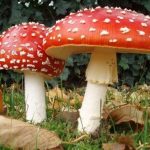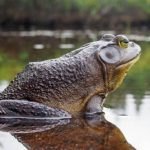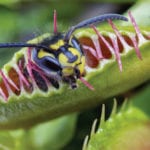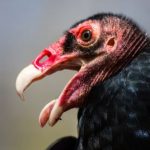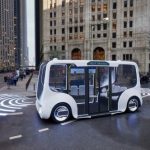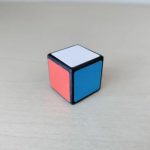 Weird Stuff
Weird Stuff  Weird Stuff
Weird Stuff  Our World
Our World 10 Ways Your Christmas Tree Is More Lit Than You Think
 Movies and TV
Movies and TV The 10 Coolest Stars to Set Sail on The Love Boat
 History
History 10 Things You Didn’t Know About the American National Anthem
 Technology
Technology Top 10 Everyday Tech Buzzwords That Hide a Darker Past
 Humans
Humans 10 Everyday Human Behaviors That Are Actually Survival Instincts
 Animals
Animals 10 Animals That Humiliated and Harmed Historical Leaders
 History
History 10 Most Influential Protests in Modern History
 Creepy
Creepy 10 More Representations of Death from Myth, Legend, and Folktale
 Technology
Technology 10 Scientific Breakthroughs of 2025 That’ll Change Everything
 Weird Stuff
Weird Stuff Ten Bizarre Facts About The Doge Meme
 Our World
Our World 10 Ways Your Christmas Tree Is More Lit Than You Think
 Movies and TV
Movies and TV The 10 Coolest Stars to Set Sail on The Love Boat
Who's Behind Listverse?

Jamie Frater
Head Editor
Jamie founded Listverse due to an insatiable desire to share fascinating, obscure, and bizarre facts. He has been a guest speaker on numerous national radio and television stations and is a five time published author.
More About Us History
History 10 Things You Didn’t Know About the American National Anthem
 Technology
Technology Top 10 Everyday Tech Buzzwords That Hide a Darker Past
 Humans
Humans 10 Everyday Human Behaviors That Are Actually Survival Instincts
 Animals
Animals 10 Animals That Humiliated and Harmed Historical Leaders
 History
History 10 Most Influential Protests in Modern History
 Creepy
Creepy 10 More Representations of Death from Myth, Legend, and Folktale
 Technology
Technology 10 Scientific Breakthroughs of 2025 That’ll Change Everything
10 Hilariously Specific Studies That Were Surprisingly Useful
Science often tackles big questions, but sometimes researchers dive into hilariously specific problems that seem trivial at first glance. From belly flops to buttered toast, these quirky studies often hide surprising applications and insights that have impacted fields ranging from engineering to psychology.
Here are ten oddly specific studies that turned out to be unexpectedly useful.
Related: 10 Strange Psychological Studies
10 The Physics of Belly Flops
A 2023 study delved into the mechanics of belly flops, investigating the forces involved when a flat human body impacts water at high velocity. Using high-speed cameras and human analog dummies, researchers analyzed the angle of entry, speed, and surface tension of the water. They found that even slight variations in entry angle could dramatically affect the force of impact, with certain angles amplifying the energy transfer, causing more pain and a greater risk of injury. The data revealed that an entry angle of zero degrees (completely flat) created the maximum force, leading to the loud, stinging slap synonymous with belly flops.
Although the research seemed frivolous at first glance, it led to practical applications. Lifeguards and divers now use the study’s findings to refine water-entry techniques, reducing the risk of injury during rescues. Similarly, the research has influenced the design of high-impact water rescue equipment, including flotation devices and protective gear that mitigate water slap injuries during rapid descents. The findings have also informed sports training, especially in diving, where understanding impact forces helps athletes minimize pain during practice.[1]
9 Why Toast Always Lands Butter-Side Down
Physicist Robert Matthews tackled the age-old question of why toast often lands butter-side down when dropped. In his 1990s study, Matthews determined that the phenomenon was governed by physics rather than chance. Toast, when falling from a standard table height of around 3 feet (1 meter), rotates at a predictable speed due to gravity and its center of mass. With limited space to complete a full rotation, the toast naturally lands butter-side down in most cases. Matthews also tested variations in height and butter thickness, noting that thicker coatings of butter slightly increased the chance of a messy landing.
Matthews’s study went on to have unexpected educational and practical benefits. Physics teachers have used his findings to explain rotational dynamics and center-of-mass principles in a relatable way. Beyond education, the study influenced the packaging of fragile foods and other items; manufacturers began designing products with stabilizing features to minimize damaging tumbles. Matthews even won the 1996 Ig Nobel Prize for this research, celebrating its blend of humor and scientific utility.[2]
8 Do Pigeons Recognize Art Styles?
A quirky 1995 study demonstrated that pigeons could differentiate between paintings by Claude Monet and Pablo Picasso. Researchers trained pigeons using operant conditioning, rewarding them with food for correctly identifying paintings by each artist. The birds were shown new paintings by the same artists, and they consistently categorized them correctly, even when the images were unfamiliar. Researchers expanded the study, testing whether pigeons could recognize other art styles, such as abstract versus realistic works, and found similar results.
This seemingly humorous study had profound implications for understanding animal cognition and visual processing. It demonstrated that pigeons, despite their small brains, possess advanced pattern recognition abilities. These insights have informed artificial intelligence and machine learning, where similar algorithms are used to teach computers to recognize visual data patterns. The research also inspired further experiments with other animals, such as dogs and primates, to study their ability to process abstract concepts. The study’s broader significance lies in revealing the underestimated cognitive abilities of birds.[3]
7 The Mathematics of Traffic Jams
In 2008, researchers set out to understand the causes of “phantom traffic jams,” those mysterious slowdowns that occur without any apparent reason. On a circular test track, they placed several vehicles and instructed drivers to maintain a constant speed. Despite the simplicity of the setup, the flow of traffic quickly broke down. Minor variations in individual speeds caused cascading effects, leading to stop-and-go waves even though there were no obstacles.
The study’s findings have been transformative. The mathematical models derived from the experiment informed the development of adaptive cruise control systems in cars, which help reduce unnecessary braking and smooth out traffic flow. These systems are now standard in many vehicles, improving fuel efficiency and reducing commuter frustration. Additionally, urban planners and traffic engineers have used the data to design smarter road systems, including ramp metering and variable speed limits, to prevent congestion before it starts.[4]
6 Why Penguins Don’t Freeze Their Feet
In 2006, scientists investigated how Antarctic penguins manage to stand on ice for hours without freezing their feet. By examining the birds’ circulatory systems, researchers discovered a unique counter-current heat exchange mechanism. Warm blood flowing from the penguin’s body enters its legs, where it transfers heat to colder blood returning from the feet. This system minimizes heat loss while maintaining enough circulation to prevent frostbite.
The study had significant implications for human technology. Engineers have used the findings to create more efficient insulated clothing, such as heated gloves and boots, for extreme conditions. The principles of counter-current heat exchange have also been applied in industrial processes, including the design of heat exchangers in power plants and cooling systems. Beyond its practical applications, the study offered new insights into how animals have evolved to survive in some of Earth’s harshest environments.[5]
5 The Speed of Ketchup Flow
Ketchup lovers owe a debt of gratitude to rheologists who studied the viscosity and flow behavior of ketchup in the early 2000s. These researchers analyzed why ketchup sticks to bottles and how its flow rate changes under different forces. The study revealed that ketchup is a non-Newtonian fluid, meaning its viscosity decreases when stress is applied. This property explains why tapping the bottle can suddenly cause an explosion of ketchup after a frustrating wait.
The results revolutionized food packaging, leading to the development of squeezable bottles and specially designed no-spill caps that regulate flow. The findings even extended beyond condiments, inspiring pharmaceutical companies to design better dispensers for medical gels and syrups. The study has also become a classic example in teaching fluid mechanics, demonstrating how everyday substances can provide profound scientific insights.[6]
4 The Aerodynamics of Frisbees
In 2004, scientists studied the flight of Frisbees, focusing on the forces of lift, drag, and spin that determine their stability and distance. Wind tunnel experiments and computer models revealed that the shape of the disc and its rate of spin were critical to maintaining a stable flight. The findings showed how minor design tweaks could drastically improve performance, such as enhancing edge profiles or altering weight distribution.
This research didn’t just improve recreational flying discs; it also informed drone technology. Engineers designing lightweight, stable aircraft have drawn on the principles uncovered in the Frisbee study. Sports manufacturers, too, have used the findings to create high-performance discs for ultimate Frisbee competitions, ensuring better accuracy and longer flight distances.[7]
3 Can Fish Recognize Faces?
In 2016, researchers trained archerfish to recognize human faces by displaying images on a monitor above their tank. The fish, known for their precision water-spitting ability, were rewarded for correctly targeting the faces they had been shown during training. Even when presented with new faces, the archerfish were able to identify the correct one with impressive accuracy.
This quirky study has shed light on the evolution of facial recognition across species and inspired advancements in biometric technology. Its implications extend to security systems, where understanding how simple neural systems process complex images has improved machine-learning algorithms. It also challenged long-held beliefs that face recognition requires a large, sophisticated brain, prompting further research into cognitive abilities in other animals.[8]
2 The Optimal Way to Dunk a Biscuit
Physicist Len Fisher explored the ideal method for dunking biscuits (cookies for those in America) into tea, investigating how capillary action draws liquid into the biscuit. Fisher calculated the optimal dunking time to achieve maximum absorption without structural collapse, using mathematical models and controlled experiments to measure the balance between crispness and sogginess.
The study became a cultural phenomenon and was later applied in food science. Manufacturers have used similar principles to improve the texture and structural integrity of baked goods, ensuring they remain intact during packaging and shipping. Fisher’s work also brought scientific rigor to a universal everyday habit, blending humor with practical value.[9]
1 How Ducks Stay Dry
A 2010 study examined how ducks remain waterproof even in heavy rain or when diving underwater. Researchers discovered that ducks’ feathers have a microscopic structure that traps air and repels water, thanks to a combination of barbs, barbules, and natural oils. These features create a hydrophobic surface, allowing water to roll off while preserving the bird’s buoyancy and insulation.
The study inspired innovations in material science, particularly in the development of water-repellent coatings. These advancements have been applied to outdoor clothing, self-cleaning surfaces, and protective coatings for electronics. The study also contributed to the field of biomimicry, demonstrating how nature’s designs can solve engineering challenges.[10]
